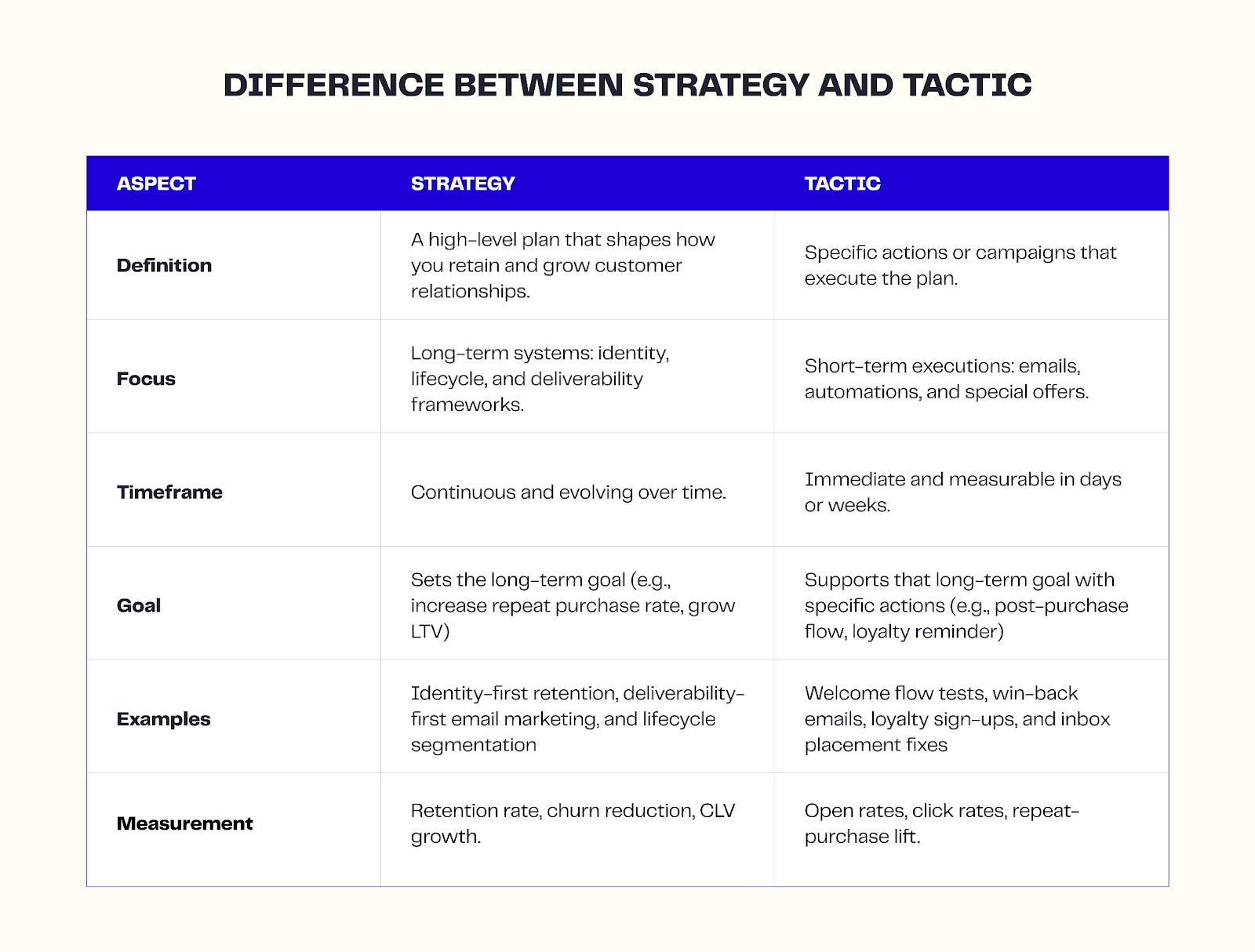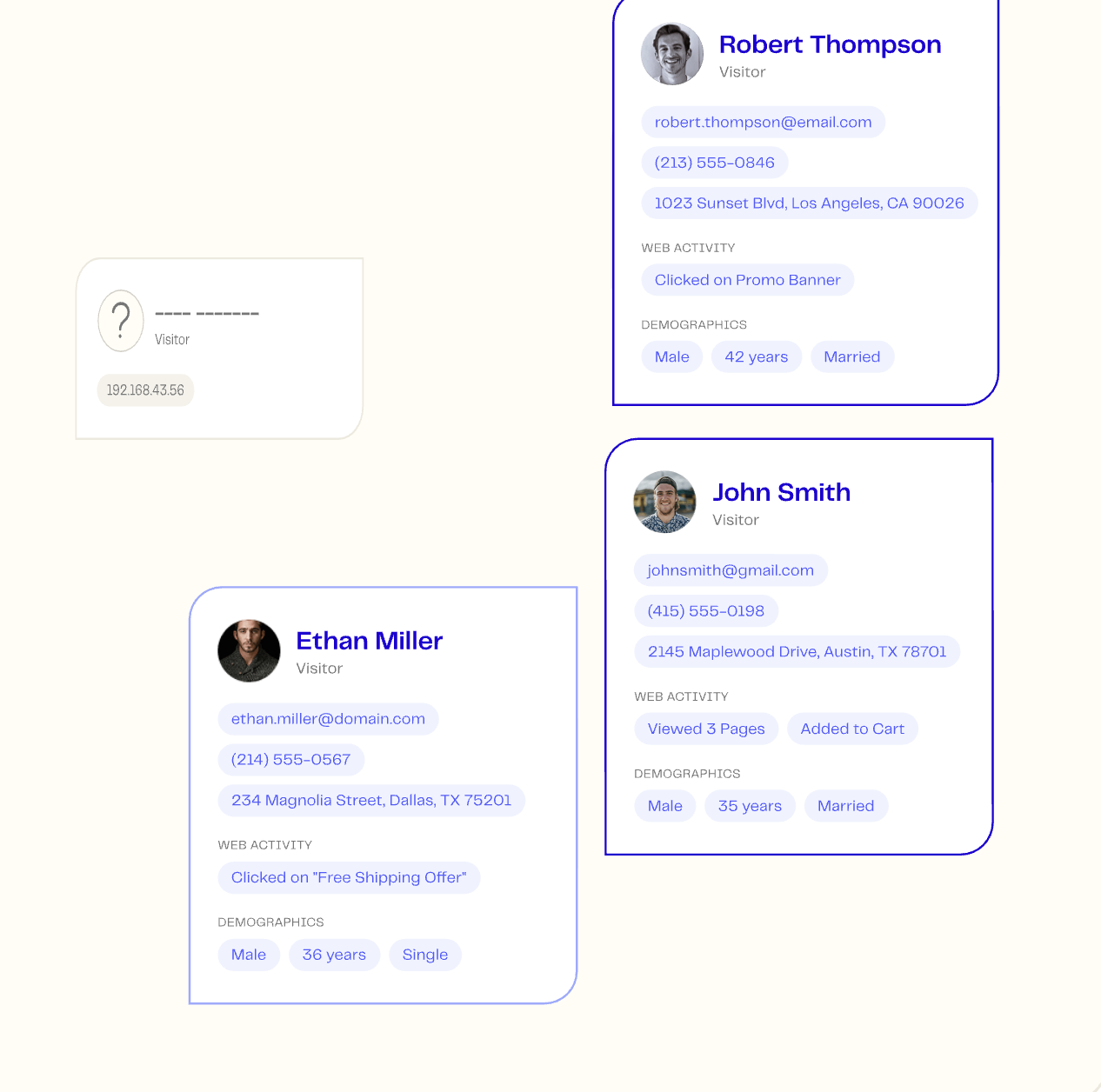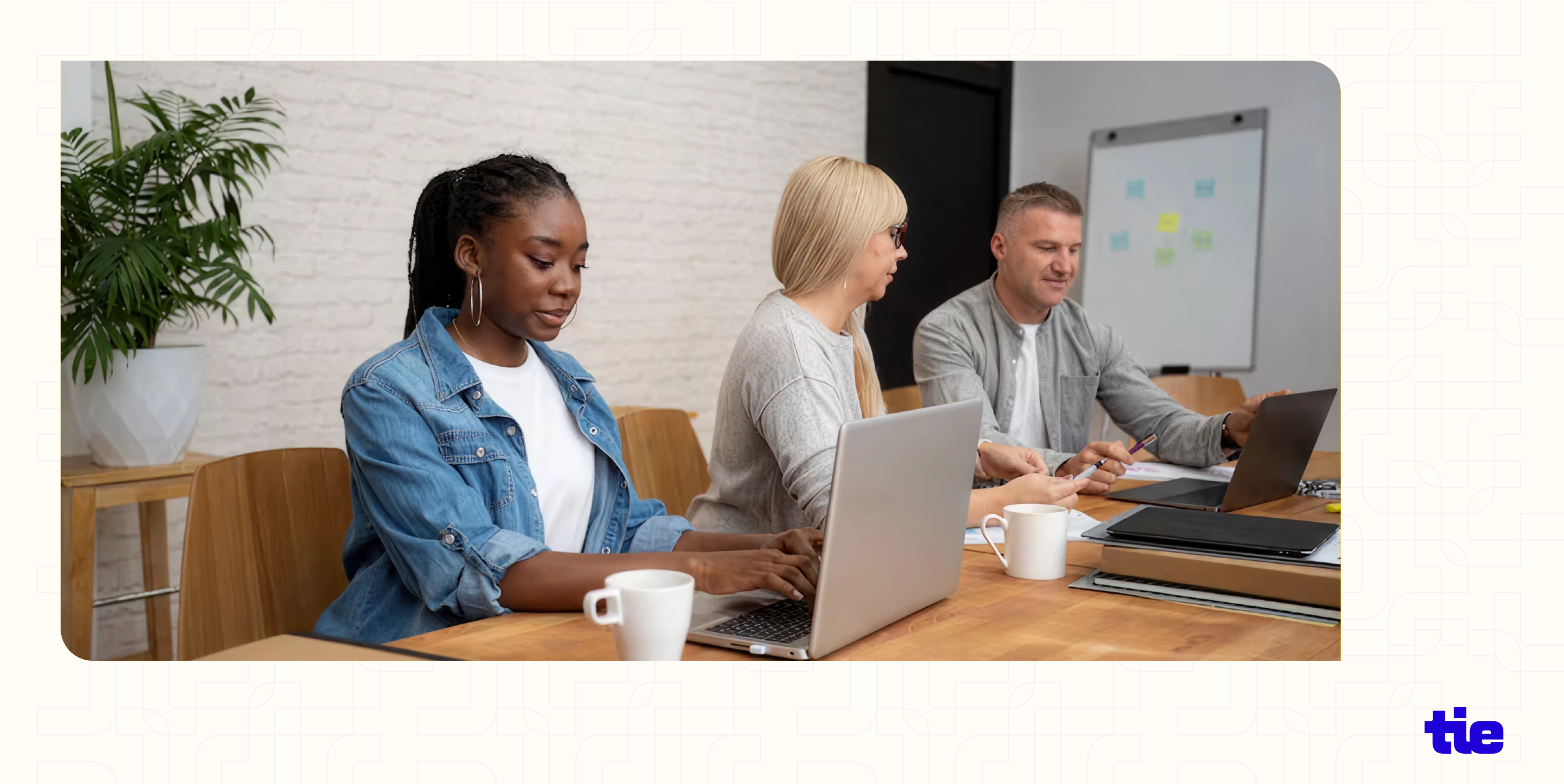19 Retention Marketing Tactics for Ecommerce Brands

Customer acquisition costs have tripled over the last few years. You now pay more to reach the same audience. Ads that once converted easily now compete for attention across every channel. The most reliable and cost-effective way for brands to capture revenue is to tap into the buyers they’ve already earned and maximize their value.
Retention marketing does exactly that. It’s the set of concrete actions that keep your existing customers active, engaged, and buying again without relying on constant paid spend.
Instead of chasing new leads, you focus on owned channels: your email, SMS, push, onsite, and social. Together, these systems turn each purchase into the start of the next one.
In this guide, we’ll explore 19 actionable retention marketing tactics that you can build or optimize this quarter. When executed together, these tactics help you increase customer retention, lower acquisition costs, and create a predictable revenue base built entirely on your existing customer base.
Tactics vs. strategies
Customer retention marketing efforts fall short because teams confuse strategies with tactics. They are not the same.
A customer retention strategy is your high-level plan. It defines how you retain loyal customers: the systems, data models, and lifecycle triggers that drive repeat behavior.
Tactics, on the other hand, are the actions that bring those retention marketing strategies to life. They’re the day-to-day executions, like testing welcome flow variants and sending loyalty or referral prompts.

Core retention marketing tactics, channel-agnostic
Once your retention strategy is clear, it’s time to turn it into motion. These are the foundational plays that drive repeat purchases day-to-day.
They aren’t tied to one channel. They work across email, SMS, onsite, and paid. What matters is the outcome: keeping current customers engaged and moving toward their next purchase.
1. Welcome/onboarding emails
Build a three-part sequence that guides new customers through the first week after purchase.
- Email 1 (Day 1): Confirm the order, explain what happens next, and share setup or usage instructions.
- Email 2 (Day 3): Introduce bestsellers or related products often bought by first-time customers.
- Email 3 (Day 7): Invite them to set preferences for content, frequency, or product categories.
This sequence shortens the gap between the first and second order while giving you early zero-party data for segmentation.

2. VIP/loyalty enrollment prompts
Customers who come back quickly show you what resonates and where momentum already exists.
Lean into that moment. Invite them into loyalty or VIP access right when intent is highest — at checkout, in the delivery confirmation, or immediately after their second purchase. Frame it as access, not enrollment: priority drops, restock alerts, early releases, experiential perks.
Once they opt in, you create a permission loop that lets you re-engage with purpose, not noise. This is where retention shifts from discount-driven nudges to value-driven privilege that compounds over time.
3. Product adoption nudges (post-purchase/how-to)
Your post-purchase sequence should reduce uncertainty and make customers feel confident about their choice.
Send a short, visual message showing how to use or care for the product. Then follow up with community examples, like reviews, usage photos, or social mentions.
The intent isn’t to upsell, but to validate their decision. When customers feel they bought “the right thing,” their next click is already primed.
4. Order/shipping & delivery notifications (real-time)
Leverage order and shipping notifications for retention. These messages have high open rates and reach customers at moments of anticipation.
Include relevant add-ons or loyalty reminders within the same message, and never as separate emails. Consistent, transparent updates increase reliability and overall engagement.

5. Milestone/anniversary messaging
Celebrate the moments that prove a customer is choosing you— one year since their first order, their fifth purchase, or a loyalty-tier upgrade. Automate these touchpoints to recognize progress, reinforce belonging, and signal that loyalty matters.
Pair the message with a simple next step: a bonus to redeem, early access to inventory, or a VIP-only surprise. When customers feel seen, they stay, and milestone recognition is one of the most reliable ways to turn satisfaction into long-term retention.
6. Lapsing-shopper alerts & win-back sequences
Set triggers based on inactivity: last order, last browse, or last email click. When those thresholds are met, send a reactivation message tied to the customer’s previous activity.
For example, show products from their last category or offer a restock reminder for past orders. Prevent churn by reaching shoppers before their buying cycle ends instead of after it’s broken.

7. Social-proof activity messages
Integrate social signals across retention flows. Add a small proof block to product updates, newsletters, and post-purchase messages showing verified reviews, ratings, or volume indicators (“4,200 customers reordered this item”).
Remember to keep these messages factual and dynamic. Social context reduces hesitation and increases message credibility.
8. Preference-center & frequency controls
When customer engagement drops, ask for feedback before losing the contact. Run a “slow down, not goodbye” re-engagement flow linking directly to a preference page.
Offer options like:
- “Once a week updates”
- “Only product launches”
- “Pause for 30 days”
This converts passive churn into a controlled cadence and keeps your deliverability healthy.
9. Cross-sell/upsell follow-ups
Cross-sells only work when timing matches how customers actually use your product. Use order data to predict natural replenishment windows or complementary customer needs.
Trigger follow-ups like:
- “Running low? Reorder in one click.”
- “Complete the set! Here’s what pairs with your last purchase.”
The key is intent-based logic. When follow-ups align with real behavior, they stop feeling like upsells and start feeling like helpful guidance.
Low-effort retention tactics
Retention doesn’t always require new automations or heavy lifts. Often, meaningful gains come from tightening what’s already live.
These six tactics help you maintain visibility, surface value at the right moments, and convert quiet customers back into active buyers, with minimal operational effort.
10. Year-in-review/value recaps
Turn customer history into motivation. A personalized year-in-review recap shows customers what they’ve accomplished with your brand— orders placed, products loved, points earned, savings unlocked. It reinforces progress and reminds them why they’ll keep coming back.
Pull order + loyalty data for the past year, surface meaningful stats (number of purchases, total items, money saved, carbon offset, rewards earned), and end with a forward-looking nudge:
“You’ve come this far! Here’s your next milestone.”
When customers see their own data reflected back, you shift the relationship from one-off transactions to a shared journey. These campaigns consistently lift opens, clicks, and re-purchase intent because they turn loyalty into a story, not just a reward.

11. Milestone emails
Milestones add emotion to automation. They’re one of the simplest ways to drive repeat purchases without relying on discounts because they reinforce belonging, not urgency.
Automate messages that celebrate meaningful checkpoints: six months since first purchase, fifth order placed, or loyalty-tier upgrades. These surprise recognition points make customers feel seen and deepen brand attachment at moments when they expect nothing.
Each message should include:
- A thank-you message
- Show what milestone was reached
- Guide them to one next step (redeem a perk, explore a new collection, unlock a loyalty benefit)
Avoid stacking multiple CTAs and instead, focus on one clear action.
12. Simple loyalty prompts
Loyalty doesn’t fail from lack of interest. It fails from a lack of visibility. Customers forget unless you remind them subtly, consistently, and in context.
Embed small loyalty call-outs inside high-intent messages like post-purchase emails, shipping confirmations, and delivery notifications. Show live point balance, next-tier progress, or an upcoming reward.
This quiet repetition builds habit and recall, increasing redemption and purchase frequency without adding new campaigns or creative cycles.
13. Newsletters
Newsletters aren’t fillers between launches. They keep your brand present during buying cycles. The goal is steady visibility that adds value, not noise.
Use a repeatable structure:
- One useful insight (care tip, styling idea, recipe, routine, how-to)
- One product update (restock, new drop, seasonal feature)
- One next step (shop, refer, restock, join waitlist)
Then segment tone and CTA based on lifecycle:
- Active buyers: Deepen affinity with richer education and product context
- Lapsing shoppers: Show what’s new since they last purchased and why it matters
Done consistently, newsletters smooth revenue dips, protect deliverability, and keep purchase intent warm even when you’re not running promotions.
14. SMS/push notifications
SMS and push messages should serve a clear operational purpose, like restocks, delivery confirmations, reward expirations, or limited-time drops. Write short, directive messages with one CTA and send them during active hours for your key markets.
Avoid overlapping channels; if a message goes out via SMS, delay the push notification to prevent fatigue. When used selectively and intentionally, these messages drive instant action and maintain trust in how you communicate.
15. Abandoned-cart recovery (with wider reach)
Most cart recovery flows only reach customers who are logged in or cookie-consented, which is less than half your abandoners. Use cookie-resilient identification to capture sessions from anonymous visitors and sync them to your ESP or SMS platform.
Once resolved, trigger your existing cart-recovery emails with dynamic product content pulled from the abandoned session. You don’t need a new series, but better coverage.
For example, Twillory, a premium men’s apparel brand, used Tie’s AI ID Graph to update and matched 83% of cart abandoners, resulting in a 5× ROI in 30 days.
16. Inbox placement optimization (promo -> primary)
Inbox visibility improvements outperform creative refreshes because they increase visibility of your existing flows.
Before scaling campaigns, fix where your emails land. If key flows like win-backs and loyalty updates go to Gmail’s Promotions tab, engagement potential is already cut in half.
Add inbox placement optimization to these automations to improve deliverability and ensure messages reach the Primary inbox. Then measure lift in open rates, click-through, and revenue per send.
OluKai, for instance, implemented Tie’s Promo Tab Protection and saw a 55% increase in revenue per send, 42% higher CTR, and over $55K in incremental revenue within 24 hours.
Data and identity-powered tactics to supercharge marketing efforts
Many retention campaigns underperform because of weak data. If you don’t know who’s visiting, what they’re buying, or whether you can even reach them again, your automations hit limits fast.
That’s why the real advantage in retention is in using data and identity to make each one sharper. These three layers strengthen every tactic in this guide by expanding your reachable audience, improving targeting, and closing the gap between anonymous traffic and known customers.
17. Website visitor identification for list growth
You’ve already earned the traffic. The problem is, most of it leaves without any way for your brand to access them.
Visitor identification converts that traffic into first-party audiences you actually own. It recognizes who’s browsing, even without a form fill, and connects them to verified contact details.
This way, more of your traffic turns into reachable subscribers and matched ad IDs; a bigger base for every flow you’ve already built.
18. Real-time B2C data enrichment for segmentation
Segmentation only works when it’s built on depth, not guesswork. Most marketers rely on surface data, “bought X, viewed Y,” which leads to messages that sound personalized but feel identical.
Enrichment fixes that gap. By layering 250+ behavioral and demographic signals onto each profile, you move from broad clusters to meaningful groups: high-intent, high-value, and high-churn-risk.
That depth lets you time your messages more precisely: rewarding frequent buyers, reactivating silent ones, and tailoring upsells to purchase logic rather than categories.
19. Identity resolution to expand the reachable audience
If you’re not resolving identities, you’re losing customers you already won. Shoppers browse on phones, check out as guests, or return months later under new sessions, and most ESPs see them as separate people.
Identity resolution reconnects those fragments into one profile, so your automations, retargeting, and audience syncs all point to the same human. This shift directly increases customer retention metrics because your system stops treating real customers as new ones.
Brands like Jordan Craig used Tie to identify nearly 50% of site traffic, reactivate 1M+ subscribers, and deliver record Q2 email revenue. Similarly, CARIUMA uncovered 7,000+ anonymous visitors, excluded them from prospecting, and funneled them into high-ROI retargeting campaigns.
Channel toolbox: Where tactics run best
Retention tactics don’t work in isolation. Their impact depends on where you run them. For example, the same message can perform 3 times better when it hits the right channel, at the right point in the customer’s journey.
Each channel plays a specific role: email builds depth, SMS and push deliver urgency, and onsite touchpoints reinforce momentum. The advantage comes from orchestration, not volume. When each channel supports the others, instead of repeating the same message everywhere, your retention system compounds.
Email: Your long-term relationship channel
Email is the base of retention because you own it. There are no algorithms and no dependency on paid reach. It’s where you build continuity: the story that runs after the first purchase.
Use email campaigns for:
- Lifecycle automations: Welcome, win-back, replenishment, customer loyalty, and milestone flows.
- Product adoption: Teach customers how to get more value from what they bought.
- Retention storytelling: Newsletters or brand updates that create familiarity and trust.
Since it’s opt-in and long-form, you can go beyond discounts and build customer behavior loops, turning one-time buyers into recurring customers. When you combine that with strong deliverability (Primary inbox placement, authenticated sending), it becomes your highest-ROI retention channel.
SMS: Precision, not volume
SMS is more personal, which is why you need to treat it like a privilege, not a broadcast list. It performs best when timing, relevance, and consent align.
You can use the SMS channel for:
- Time-sensitive triggers: Restocks, exclusive offers, or abandoned carts.
- Transactional updates: Order confirmations and shipping alerts.
- High-intent follow-ups: Reminders for loyalty points or rewards expiring soon.
Avoid using SMS for generic promos or weekly blasts. You’re not trying to send more texts, but trying to send the right one when it matters most.
Push notifications: Instant reactivation
Push sits at the intersection of convenience and timing. It lets you re-engage shoppers instantly without the friction of email or SMS consent.
Some use cases for this channel:
- Behavioral prompts: “Your saved item is back,” “You left something in your cart.”
- Post-purchase updates: Shipping, delivery, or product setup instructions.
- Short-term reactivation: Reminders for loyalty milestones or app-based actions.
Push notifications work best when timed to activity, not scheduled like a campaign. It’s the fastest way to reconnect intent and action, especially for mobile-heavy audiences.
Social and retargeting: Retention through visibility
Retention doesn’t stop at owned channels. Social and retargeting touchpoints keep your brand present in the customer’s world, strengthening loyalty, reinforcing community, and supporting the delivery and visibility of your acquisition ads.
Use these channels to:
- Re-engage past buyers with category- and SKU-specific retargeting.
- Promote customer loyalty programs to your most engaged audience.
- Show dynamic product ads tied to browsing or purchase behavior.
With first-party data syncing your CRM to ads, paid retention becomes as targeted and efficient as your lifecycle flows. Instead of spending on customers who would have returned anyway, you reserve budget for those drifting away, using social as a lightweight, always-on recall layer.
On-site personalization: Retention that starts early
Retention begins long before a customer subscribes. What visitors see on your site determines whether they stay, buy, or come back.
You can use personalized experiences to:
- Detect returning visitors and show dynamic recommendations or saved carts.
- Trigger loyalty prompts once a shopper logs in or completes a purchase.
- Highlight unused credits or points for existing members.
When paired with visitor identification, even anonymous shoppers receive tailored experiences that make them more likely to convert, and later, to return.
Tie-powered retention infrastructure (beyond automation)
Every ecommerce brand runs automations: welcome flows, win-backs, loyalty reminders. But what separates good retention systems from great ones is infrastructure. Not more emails or offers, but stronger inputs: identity, data, deliverability, and visibility.
That’s where Tie comes in. These Tie-powered tactics plug directly into your existing stack to make every message, segment, and campaign work harder:
1. Protect email deliverability
If your email marketing campaigns land in Gmail’s Promotions tab, half your retention effort is invisible. With Tie’s Promo Tab Protection, you can move key automations, like win-backs, loyalty prompts, and milestone flows, straight to the Primary inbox.
That shift alone often lifts engagement within 24 hours. OluKai, for instance, saw a 55% jump in revenue per send and a 42% higher CTR after protecting their post-purchase flows. When you protect deliverability, you don’t send more, but rather you make every message work harder.

2. Grow your email list with real data
You can’t retain customers you can’t reach. Tie identifies high-intent visitors before they subscribe, matches them with verified email or ad IDs, and syncs those contacts directly to your ESP and ad platforms.
This gives your workflows (from the onboarding process to cross-sells) a larger, more qualified audience to target. You build your list with actual shoppers, and not just sign-ups from forms. The result is a faster-growing email list and a more responsive base that feeds every downstream retention channel: email, SMS, and paid retargeting.

3. Resolve customer identity gaps
Anonymous shoppers are your biggest missed opportunity. Guest checkouts, cart abandoners without email capture, returning visitors on new devices, all invisible in most systems.
Tie’s identity resolution connects these fragmented sessions to real people, making them reachable again. This expands your addressable audience for win-backs, replenishment nudges, and lapsing-user outreach.
On average, brands double their re-engagement pool simply by resolving identities that their ESPs couldn’t see.
4. Enrich customer data for deeper personalization
Retention depends on knowing not just who your customers are, but what drives them back. Tie’s identity enrichment tool enriches each profile with over 250 behavioral and demographic fields, from purchase intent and price sensitivity to category affinity.
You can use this data to:
- Send early access to your top spenders.
- Create milestone emails tied to order history.
- Recommend products based on individual buying signals, not generic logic.
With richer data, you move from “batch sends” to conversations that feel personal and convert better.
5. Identify and retarget website visitors
Most retargeting fails because it’s built on incomplete data. Tie’s website visitor identification fixes that. It links site activity to known profiles, ad IDs, and past purchases, restoring visibility across every touchpoint.
This lets you rebuild high-ROI audiences for:
- Abandoned-cart follow-ups.
- Personalized onsite popups.
- Email, SMS, and even direct-mail retargeting.
By identifying who’s behind each visit, you stop guessing who to follow up with and start closing the loop on every potential customer.

Frequently asked retention questions
What are the most effective retention marketing tactics for ecommerce?
Start with tactics that bring customers back without needing more ad spend:
- Abandoned cart sequences to recover unfinished checkouts.
- Win-back automations targeting lapsing shoppers 45–90 days after their last order.
- Product adoption emails that teach customers how to get more value from their purchase.
- Loyalty prompts that enroll recent buyers into points or VIP programs.
- Inbox placement optimization to keep retention flows out of Gmail’s Promotions tab.
- Order and shipping notifications turned into cross-sell or early-access touchpoints.
Which email retention flows should every brand set up?
Email is still the base of retention, but only if each flow has a clear purpose:
- Welcome/onboarding series to convert first-time buyers into repeat customers.
- Regular newsletters with product updates or use-case stories (not just discounts).
- Re-engagement sequences that invite customers to adjust frequency or content type instead of unsubscribing.
- VIP and loyalty offers for top-spending cohorts.
- Cross-sell and upsell emails based on order data, not assumptions.
When these flows run in sync, they lift customer lifetime value (CLV) and reduce customer churn rate simultaneously.
Which channels work best for retention tactics?
There isn’t a single winning retention channel. Each serves a distinct purpose. For example:
- Email builds the owned relationship.
- SMS adds immediacy for offers or updates.
- Push notifications re-activate shoppers in real time.
- Social media and onsite messages reinforce visibility between purchases.
Blend these based on customer consent and the buying cycle. Consistency across channels matters more than frequency on one.
What are some examples of high-impact retention tactics I can run this week?
Start with low-setup, high-impact automations:
- Win-back or lapsing user series, like reactivate dormant segments.
- Loyalty enrollment prompts—auto-invite after the second order.
- Order and shipping updates with product suggestions.
- Usage or value recap emails; show outcomes, not just offers.
- Milestone campaigns: birthdays, anniversaries, or 100-day thank-yous.
Each can run inside your existing email or SMS tool and show results within a week.
Do deliverability fixes really move retention KPIs?
Yes, deliverability fixes move retention KPIs. When campaigns land in the Primary inbox, engagement and revenue rise across every flow: welcome, win-back, or loyalty.
For example, OluKai used Tie’s Promo Tab Protection to move flows out of Gmail’s Promotions tab and saw a 55% revenue per send and a 42% click-through rate.
How do identity resolution and enrichment improve retention marketing tactics?
Identity resolution connects anonymous visitors and non-subscribers to real customer profiles. When paired with enrichment, like 250+ behavioral and demographic fields, it lets you:
- Retarget double the number of abandoned carts.
- Personalize messages for first-time visitors.
- Segment more precisely for upsells and loyalty prompts.
That means more reachable shoppers and more relevant retention flows.
Are these tactics only for ecommerce?
No. The same retention logic applies to SaaS, hospitality, education, and healthcare. Any brand that wants repeat engagement can adapt these tactics. The channels, triggers, and messaging change based on industry.
What are common retention campaign types?
Some of the most common retention campaign types are:
- Loyalty or VIP enrollment
- NPS and customer feedback prompts
- Product adoption journeys
- Order tracking updates
- Milestone and anniversary touchpoints
- Lapsing user and win-back automations
- Year-in-review or usage recaps
- Social or community engagement nudges
How fast can inbox placement tactics show results?
Most brands begin seeing impact within 24 hours of adjusting their templates or authentication setup. Better placement increases visibility immediately, leading to higher engagement across all automated flows.
Inbox optimization is one of the fastest levers for improving retention because it lifts performance without changing frequency or offer.








